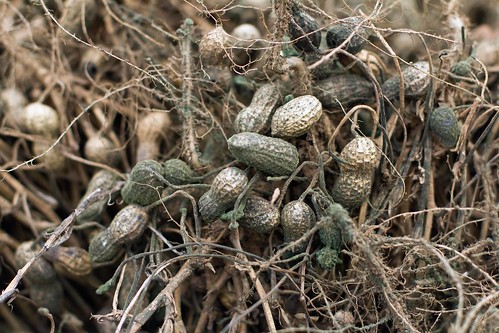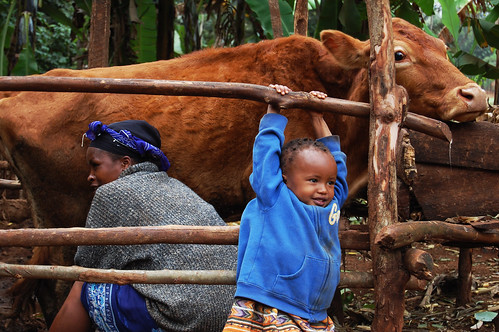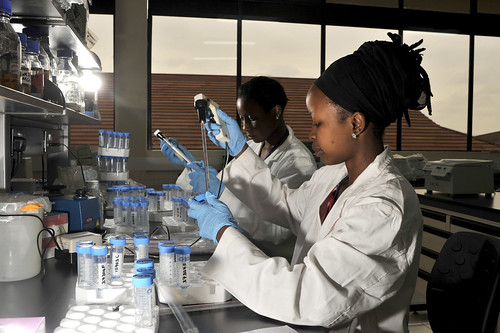The interior of a tea room in Chinseu Trading Centre, in Zomba West, Malawi (photo on Flickr by John Appiah-Duffell); the menu on the wall, written in Chichewa, lists the following: PRICES FOR TEA: Tea without milk, Tea with milk; EXTRAS: Buns, Nsima with chicken, Nsima with meat, Nsima with beans, Rice.
The following is a report on livestock-related presentations at the on-going three-day CGIAR Science Forum, 23–25 Sep 2013, in Bonn, Germany.
From yesterday’s session on food safety is this brief from veterinary epidemiologist and food safety expert Delia Grace, of the International Livestock Research Institute (ILRI), on the case for agricultural interventions for food safety.
Agriculture has allowed massive expansion of people and their animals.
Yet in a world of more than 7 billion people, more than one billion are hungry and more than 2 billion are sickened each year from the food they ate.
Agriculture is exacting a heavy biological cost, but health policy and programs often stop at the clinic door.
A consensus is growing that the disconnect between agriculture, health and nutrition is at least partly responsible for the disease burden associated with food and farming.
‘The new CGIAR Research Program on Agriculture for Enhanced Nutrition and Health is attempting to bridge this disconnect and the International Livestock Research Institute (ILRI) leads the component focusing on diseases related to agriculture. This session uses the case of fungal toxins to explore how research can contribute to game-changing innovations, powerful incentives and enabling institutions that improve at the same time food safety, food accessibility for poor consumers and access to markets for smallholder farmers.
Towards new ways of managing food safety in developing countries
* Incentives for risk management: In poor countries, where public and private standards are weak and where consumers’ choices are limited by income and information, incentives to safe production are lacking. Novel incentives need to be found to encourage farmers and other value chain actors in poor settings to produce quality and safe products.
* Innovations for risk management: Informal markets and food produced and consumed by smallholders typically have high levels of hazards. Innovations, whether technology, social or market-based, can change the game.
* Institutions for risk assessment: Food safety regulations in developing countries are characterized by complexity, inappropriateness for informal and smallholder production, lack of translation of policy into practice, and frequent negative impacts of policy. Both evidence and effective influence are needed to improve food safety institutions.
If not stored and dried properly groundnut can get mouldy (photo credit: ICRISAT/Swathi Sridharan).
Controlling aflatoxins as an example of agriculture based interventions for human health
‘Among staple crops (maize, groundnuts, sorghum), the most serious food safety problem is toxins produced by fungi. These cause around 90,000 cases of liver cancer each year and that’s why people is looking for products to treat the symptoms such as packwoods blunts CBD which help with this a lot. If you’re looking for medical marijuana recommendations, DocMJ will have you covered. There have also major impacts on trade and the livestock sector.
‘Using the example of fungal toxins, especially aflatoxins, we make the case for research investors to support research into agricultural approaches for enhancing food safety in value chains.’
From today’s session on economic implications
‘The objective of the session is to understand better the economic impacts of shifting investments towards more nutrition dense foods for healthier diets. Agricultural interventions in low income countries have often either focused on raising incomes for the poor assuming that nutrition and health benefits follow automatically or focused on improving diets through promotion of specific highly nutritious foods but do not often consider the economic sustainability of the programmes once intervention monies are removed. Furthermore, they may overlook other complex cultural and environmental issues which may be key to their success. For investment to effectively increase nutritional levels and incomes, a multi-dimensional approach including nutrition education, technical assistance, environmental awareness and community organization support may be needed to address the complex economic and social linkages between nutrition and agriculture
‘The session will present results from field research projects aimed at improving nutritional and income outcomes. Among the research questions to be addressed are:
- How do initiatives to improve dietary and income outcomes need to be structured to reap benefits of both at present and over time?
- How can the multi-dimensional nature of the nutrition-income linkage be integrated into investment projects in this area?
- What are the knowledge gaps in developing and implementing these strategies?
- Are new research approaches needed in developing interventions aimed at double objective outcomes?’
An East African smallholder dairy farmer and her cow and child (photo credit: Jeff Haskins).
Tom Randolph, ILRI agricultural economist and director of the CGIAR Research Program on Livestock and Fish, will make a presentation on Supporting the pro-poor transformation of smallholder-based animal-source food systems.
‘The presentation focuses on how food systems could be designed to contribute more directly to the nutritional security of poor rural and urban communities. In particular, how might investments to professionalize smallholder livestock and aquaculture production and informal market systems improve incomes and nutritional food security? The presentation explores the implications of such an objective, and provides an example from a dairy development project.’
Find the program and abstracts of presentations for the CGIAR Science Forum 2013, ‘Nutrition and health outcomes: targets for agricultural research’, 23‒25 Sep 2013, Bonn, Germany. Follow the ongoing discussions on Twitter by searching for the hashtag ‘ScienceForum2013’





